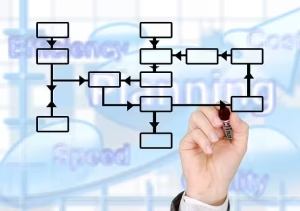Beyond a Mission Statement – The Strategic Function of a Culture Deck
There is a palpable and costly friction that occurs when a new hire, brilliant on paper, fails to integrate with the team. It’s the subtle discord in meetings, the misaligned priorities, the drain on managerial time—a dissonance that signals a fundamental mismatch not of skill, but of operating principles. This friction, compounded over time and across teams, is where the growth of a promising company stalls. It’s a quiet, expensive failure rooted in ambiguity. The most common point of failure for scaling businesses is not product-market fit or a lack of capital; it is the degradation of culture under the strain of growth.
The primary tool to inoculate against this decay is a document many businesses either neglect or misunderstand: the company culture deck. To be clear, this is not your employee handbook, which is a tactical guide to rules and policies. It is not merely your mission statement, which is a declaration of your destination. And it is certainly not a sales pitch deck, which is an external-facing argument for investment. A culture deck is your organization’s operating system (OS) made explicit. It is a strategic artifact that codifies your ethos, your behavioral norms, and the unwritten rules of engagement into a clear, distributable format.
Framing this as a “soft” Human Resources initiative is a critical strategic error. A well-architected culture deck is a hard-edged business asset with a quantifiable return on investment. Its primary functions are to enhance employer branding to attract a specific, high-value talent profile, accelerate the onboarding process, improve employee retention by setting clear expectations, and—most importantly—ensure operational and philosophical consistency as you scale. It is the blueprint that allows your organization to replicate success by cloning its core principles, not just its processes. What follows is a definitive guide to constructing one.
What Should Be Included in a Company Culture Deck? The Core Components

A culture deck is a narrative, and every effective narrative follows a logical structure. While the design and specific language will be unique to your organization, the foundational components are largely universal. They are designed to answer, with increasing granularity, the questions any discerning candidate or new employee would ask: What do you do? Why do you do it? How do you do it? And where do I fit in? Each section must be crafted with intention, as it serves a distinct purpose in building a comprehensive and compelling picture of your company’s inner workings.
Slides 1-2: Mission, Vision, and Problem Statement
This is the strategic aperture of your deck. It sets the stage for everything that follows and must be articulated with absolute clarity. Confusing a mission and a vision is a common amateur mistake; they are distinct and synergistic concepts.
- The Mission: This is the “What.” It is a concise, present-tense statement of what your organization does every day. It should be grounded, tactical, and free of jargon. For a logistics company, it might be: “We build software that optimizes last-mile delivery routes.” For a healthcare provider, it could be: “We provide compassionate, evidence-based primary care to underserved communities.” The mission is the functional reality of your business.
- The Vision: This is the “Why.” It is the future-oriented, aspirational impact of your mission. If you successfully execute your mission for years, what change will you have created in the world? It speaks to purpose and long-term goals. The logistics company’s vision might be: “A world where every delivery is carbon-neutral and hyper-efficient.” The healthcare provider’s vision could be: “A community where every resident has equitable access to quality healthcare, regardless of income.”
- The Problem: This component provides critical context. Every successful business exists to solve a specific problem or market inefficiency. Clearly stating this demonstrates market awareness and gives your mission a tangible adversary. For the logistics company, the problem is “the economic and environmental waste of inefficient delivery networks.” For the healthcare provider, it’s “the systemic barriers preventing low-income populations from receiving consistent medical care.”
Together, these three elements form a powerful logical chain: We exist because of this problem (Problem). To solve it, we do this work (Mission). Our ultimate goal is to create this future state (Vision). This structure immediately orients the reader and provides a rational foundation for the culture that enables this work.
Slides 3-5: Your Core Values in Action
This is the most critical section of your culture deck and the one most frequently executed poorly. Listing generic, single-word values like “Integrity,” “Excellence,” or “Innovation” is functionally useless. These words mean different things to different people and offer no actionable guidance. The purpose of this section is to translate abstract virtues into concrete, observable behaviors.
For each of your 3-5 core values, you must provide a detailed behavioral framework. An effective model includes:
- The Value: State the value clearly (e.g., “Bias for Action”).
- Definition: Provide a one-sentence definition of what this value means at your company. (e.g., “We believe that velocity and learning are paramount; we prioritize making informed, reversible decisions quickly over prolonged analysis for perfect certainty.”)
- Exemplary Behaviors (What it looks like): List 3-5 specific, positive actions that an employee who embodies this value would take. These must be observable.
- Launching a minimum viable product (MVP) to gather real-world data instead of waiting for a “perfect” version.
- Proactively proposing a solution in a meeting instead of just identifying a problem.
- Time-boxing research to a set period before making a decision.
- When blocked, immediately seeking input rather than waiting.
- Contradictory Behaviors (What it does not look like): List 2-3 specific actions that would violate this value. This is often more powerful than the positive examples, as it clarifies boundaries.
- Engaging in “analysis paralysis” for low-impact, reversible decisions.
- Using the need for “more data” as a reason to defer action indefinitely.
- Waiting for explicit permission to take on a task that is clearly within your domain.
This level of detail moves your values from platitudes on a wall to a functional part of your company OS. It becomes a tool for hiring, performance management, and day-to-day decision-making.
Slide 6: Your History & The Founder’s Story
A company without a history is a company without a soul. This section should be a concise, authentic narrative of the organization’s origin. It is not an exhaustive timeline but a story that serves a strategic purpose. It should aim to answer:
- What was the genesis? Was it a sudden insight in a garage, a frustration from a previous job, or a methodical response to a market analysis?
- What were the early struggles? Demonstrating resilience is key. Highlighting a key pivot or a moment when the company almost failed builds a narrative of tenacity that attracts like-minded individuals.
- Who were the first believers? Mentioning the first few employees or the first major client humanizes the company and shows appreciation for its foundations.
This story should be no more than one or two slides. Its function is to ground the company’s grand vision in a relatable, human-scale narrative. It provides context for why the values are what they are and demonstrates that the company’s principles were forged through real-world challenges, not conceived in a boardroom.
Slides 7-9: How We Operate: The Company OS
If values are the “why” behind your behavior, this section is the “how” of your daily operations. It makes the implicit, explicit. For a candidate or new hire, this is an invaluable guide to navigating the organization effectively and reducing the anxiety of the unknown. Address these key areas with precision:
- Communication: Define the channels and their purposes. This is a primary source of inefficiency in most companies. Be prescriptive. For instance:
- Email: For formal, external communication with clients and partners.
- Slack/Teams: For informal, asynchronous internal discussion and quick queries. Expect a response within 3 hours.
- Asana/Jira: For all project-related tasks, updates, and documentation. This is the single source of truth for work status.
- Meetings: For collaborative decision-making and complex problem-solving only.
- Meetings: Define your meeting philosophy. A strong stance here signals respect for employees’ time. Examples include:
- “Every meeting must have a clear agenda and a designated owner sent 24 hours in advance.”
- “Meetings are 25 or 50 minutes to allow for transitions.”
- “Decisions made and action items are documented and circulated within one hour of the meeting’s conclusion.”
- Feedback: How is feedback delivered and received? This is a cornerstone of a high-performance culture.
- “We use the ‘Situation-Behavior-Impact’ (SBI) model for structured feedback.”
- “Feedback is expected to be delivered in real-time or within 48 hours of an event, not saved for performance reviews.”
- “We practice Radical Candor: Challenging directly while caring personally.”
- Decision Making: Clarify how decisions are made to prevent bottlenecks and empower individuals.
- “We use a RACI (Responsible, Accountable, Consulted, Informed) matrix for all major projects.”
- “We believe in the ‘Disagree and Commit’ principle. Once a decision is made by the designated owner, everyone is expected to support its execution.”
Slide 10: Who We Hire (And Who Thrives Here)
This section functions as a high-fidelity filter. A job description lists skills (the “what you can do”), but this part of the culture deck describes traits (the “who you are”). It helps candidates self-select in or out, saving everyone time.
Move beyond generic terms like “team player.” Get specific about the psychographic profile of people who are successful in your environment. Use descriptive phrases:
- “We hire people with high agency, who run towards problems and take ownership without being asked.”
- “You will thrive here if you have a steep learning curve and are intrinsically motivated to master new domains.”
- “We look for individuals with low ego, who prioritize the best idea over their own idea.”
- “Successful team members are comfortable with ambiguity and can create structure in chaotic situations.”
By being brutally honest about the type of person who excels in your environment, you increase the signal-to-noise ratio in your applicant pool. You are not trying to appeal to everyone; you are trying to find your people.
Slide 11: Perks, Benefits, and Growth
Perks and benefits should never be presented as a random list of amenities. They must be framed as a direct manifestation of your culture and values. This reinforces the authenticity of your principles.
- Value: “Trust and Autonomy” → Benefit: “We offer unlimited PTO and flexible work hours because we hire adults and trust them to manage their workload and responsibilities.”
- Value: “Lifelong Learning” → Benefit: “We provide a $2,500 annual stipend for professional development, conferences, and books because we believe our growth is tied to your growth.”
- Value: “Transparency” → Benefit: “We hold bi-weekly ‘All Hands’ meetings where leadership shares financials and answers any question from any team member.”
Also, detail the pathways for growth. Is it a traditional vertical ladder, or do you have parallel technical and managerial tracks? Showing a clear path for advancement is a powerful tool for attracting ambitious talent.
Slide 12: The Future: Where We Are Going
Conclude the deck with a forward-looking statement. This isn’t a detailed financial projection, but a strategic overview of the company’s next horizon.
- What major product initiatives are on the roadmap for the next 18 months?
- What new markets are you planning to enter?
- What is the next major challenge the company is mobilizing to solve?
This slide serves to inspire. It tells a potential hire that they are not just joining a company as it is today, but they will be a part of building its future. It’s a call to action for builders, innovators, and pioneers.
The 4-Step Process for Creating Your Culture Deck

Creating a culture deck is not a weekend project for a single executive. It is a systematic process of discovery, synthesis, and refinement. The process itself is a culture-building exercise.
Step 1: Information Synthesis
The content of your deck cannot be invented; it must be excavated. Your culture already exists in the behaviors and assumptions of your team. Your job is to codify it. Use multiple methods to gather this data:
- Anonymous Surveys: Use tools like Google Forms or SurveyMonkey to ask quantitative and qualitative questions. Ask questions like: “On a scale of 1-10, how well do we live up to our stated value of X?” and “Describe a time you felt most proud to work here. What happened?”
- Leadership Workshops: Facilitate sessions with the executive team to align on the strategic vision, mission, and the non-negotiable cultural cornerstones.
- Focus Groups: Gather cross-functional groups of employees (especially high-performers and new hires) to discuss the unwritten rules of the company. Ask: “What advice would you give a new hire on their first day to be successful here?”
- One-on-One Interviews: Conduct structured interviews with key cultural influencers throughout the organization.
The goal of this phase is to collect raw data on the actual culture, not the desired one.
Step 2: Content Drafting & Narrative Weaving
With your raw data collected, the next step is synthesis. Cluster the findings into themes. Look for recurring words, stories, and principles. This is where you will identify your true core values.
Draft the content for each slide using clear, direct, and unambiguous language.
- Eliminate Corporate Jargon: Replace words like “synergize” or “leverage” with simpler terms like “combine” or “use.”
- Write for Clarity: Aim for a Grade 8 reading level. The goal is universal comprehension, not to sound clever.
- Use an Active Voice: It is more direct and forceful. “We value direct feedback” is stronger than “Direct feedback is valued by us.”
- Weave a Narrative: Ensure the slides flow logically from the high-level “why” (Mission/Vision) to the specific “how” (Operations/Behaviors).
Step 3: Design and Visualization
Design is not mere decoration; it is the visual expression of your culture.
- Brand Consistency: Adhere strictly to your company’s brand guidelines (logo usage, color palette, typography).
- Authentic Imagery: Use high-quality photographs of your actual team and office spaces. Avoid generic stock photos at all costs; they signal inauthenticity.
- Visual Hierarchy: Use typography, color, and spacing to guide the reader’s eye to the most important information on each slide. A heading should look like a heading, and body text should be legible.
- Accessibility: Ensure your color choices have sufficient contrast and that font sizes are readable to meet basic accessibility standards (WCAG). This is not just a compliance issue; it is a signal of inclusive culture.
Recommended tools range from the accessible (Google Slides, Canva) to the more design-focused (Pitch.com, Figma). The tool is less important than the principles behind its use.
Step 4: Feedback, Iteration, and Distribution
A culture deck created in an executive silo is doomed to fail. Once you have a polished draft (Version 1.0), circulate it internally.
- Seek Feedback, Not Consensus: The goal is not to create a deck that makes everyone happy. The goal is to create one that is true. Ask for specific feedback: “Does this slide accurately reflect how we make decisions?” or “Can you think of a better example for this value?”
- Iterate: Absorb the feedback and produce a Version 2.0. Be prepared to make significant changes.
- Publish and Promote: Once finalized, do not hide it. Publish it on your careers page. Have recruiters include it in their first contact with candidates. Feature it on your LinkedIn profile. Use it as a central document during the onboarding process.
Analysis of High-Performing Culture Deck Examples
Theory is useful, but analyzing real-world applications provides a masterclass in execution.
Case Study: The Netflix Culture Deck
The Netflix deck is the canonical example, groundbreaking for its time. Its power lies in its unflinching honesty and its direct connection to business strategy. Its core principle of “Freedom & Responsibility” is not a perk; it’s a strategic pact. Netflix grants employees immense freedom (e.g., no vacation policy, no expense policy) in exchange for elite performance. The deck explicitly states that “adequate performance gets a generous severance package.” This is not a warm and fuzzy culture; it’s a high-stakes, high-performance environment. The deck acts as a powerful filter, attracting individuals who thrive on autonomy and accountability while repelling those who seek security and structured oversight.
Case Study: The HubSpot Culture Code
While inspired by Netflix, the HubSpot deck has its own distinct flavor. Its central tenet is “Solving For The Customer.” This principle is presented as the ultimate tie-breaker in any internal debate. The deck is also a masterclass in transparency, spanning over 128 slides that detail everything from their management philosophy to their views on remote work. A key slide is the “HEART” acronym (Humble, Empathetic, Adaptable, Remarkable, Transparent), which defines the traits they hire for. The deck’s sheer comprehensiveness is a statement in itself, signaling a culture that values documentation, clarity, and thoughtful design.
Case Study: The Valve Employee Handbook
Valve represents a more radical cultural model. Its handbook for new employees famously illustrates its “flatland” or boss-less hierarchy. Employees’ desks have wheels, a metaphor for their ability to move around and join projects (“cabals”) that interest them. Compensation is determined by peer review. The handbook is effective because it honestly portrays a culture that maximizes autonomy for highly self-directed individuals. However, it also implicitly reveals the model’s challenges: potential for shadow hierarchies to form and difficulty in managing underperformance. It serves as a potent example of a highly specialized culture that works for a specific type of creative industry and personality.
Common Pitfalls and How to Avoid Them

- Aspirational vs. Actual Culture: This is the most common failure. The deck describes the culture leadership wishes they had, not the one they actually have. Mitigation: Root your deck in the data gathered in Step 1. If your data shows a culture of slow, consensus-driven decisions, do not write that you have a “Bias for Action.” Be honest about your current state.
- Lack of Specificity: Using vague, positive-sounding language that is impossible to act upon. Mitigation: For every value or principle, force yourself to list 3-5 concrete, observable behaviors as described in the components section above.
- Creating it in a Silo: The CEO and head of HR write the deck over a weekend. It is then rejected by the organization as inauthentic. Mitigation: Follow the 4-step process. Involve a cross-section of the company in the information synthesis and feedback stages.
- “Set it and Forget it” Mentality: The deck is created, published, and never looked at again. Mitigation: Schedule an annual review of the culture deck. As your company grows and evolves, your culture will too. The deck must be a living document that reflects the current reality of the organization.
Conclusion: Your Culture Deck as a Dynamic Asset
A company culture deck is far more than a recruitment brochure or a set of aspirational posters. It is the architectural blueprint for scaling your organization’s most valuable asset: its culture. When executed with analytical rigor and brutal honesty, it transforms ambiguity into clarity. It aligns your team, filters for the right talent, and provides a stable operating system that can withstand the pressures of growth.
The process of creating this deck—of excavating your principles, codifying your behaviors, and articulating your vision—is as valuable as the final document. It forces a level of introspection and strategic alignment that few other exercises can. Do not treat this as a task to be completed. Treat it as a strategic imperative. Begin the process today by scheduling the first data-gathering interviews with your team.







